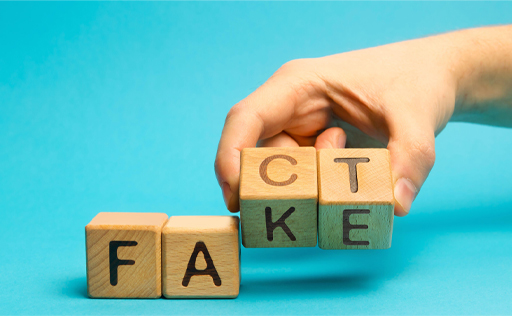2.2 Filter bubbles and echo chambers
People use information every day to make decisions. One of the main sources of information is likely to be social media. Yet, have you ever noticed how the information and social media messages you see online are often personalised to you, from adverts about the brand of trainers you like, to the sports clubs you support, to the political views you or your friends tend to know or already agree with? This is called a filter bubble or an echo chamber (where the same views as your own are echoed back to you).
Filter bubbles narrow the range of information you have access to, which has its benefits if you always buy a particular brand of jeans or trainers, but is not so helpful when trying to understand important issues or if you need to make informed decisions. You may also find it harder to identify false information as you are not exposed to other sources of information or ideas that may challenge you or make you question what you are reading or hearing.
Activity 6: Understanding filter bubbles
a.
Computer algorithms use your online search history and preferences to make assumptions about what you want to heard and filters the information it feeds you.
b.
Computer algorithms use your online search history and preferences to expand the range of ideas and perspectives it feeds you.
The correct answer is a.
a.
It isn’t always obvious you are in a filter bubble!
b.
You may only see the opinions of those who think the same way as you.
c.
You may be surprised by or become much less tolerant of other viewpoints.
The correct answers are a, b and c.
3. Fake news is ___________ that is purposefully circulated.
Answer
misinformation
4. List three reasons for why people might circulate fake news.
Answer
- For money (for example fake reviews may influence you into buying a product).
- For propaganda (information may be designed to influence you politically).
- For fun (false stories can become viral videos for sharing and entertainment).
5. Why do you think misinformation or fake news does well in filter bubbles?
Discussion
In your reflections you might thought about how only reading the views of those who agree with you means you have nothing to compare or check this information against. You may not be exposed to different views which raise question or alarm bells. Something might sound very believable because it uses the same language you do. Or you may think that it must be true because no one else in your circles has stopped to check the information or flagged it as an issue.
So, how can you protect yourself from filter bubbles and false or misinformation? In short, you can’t. If you use the internet and social media, computer algorithms will analyse what you say and do online and filter the information you see. This can be helpful for some tasks, but it will also limit what you see and hear. The important thing is for you to be aware that you might be isolated from wider society in your thinking (in a filter bubble), so ask questions about the information you receive and expand the range of information you are exposed to.

